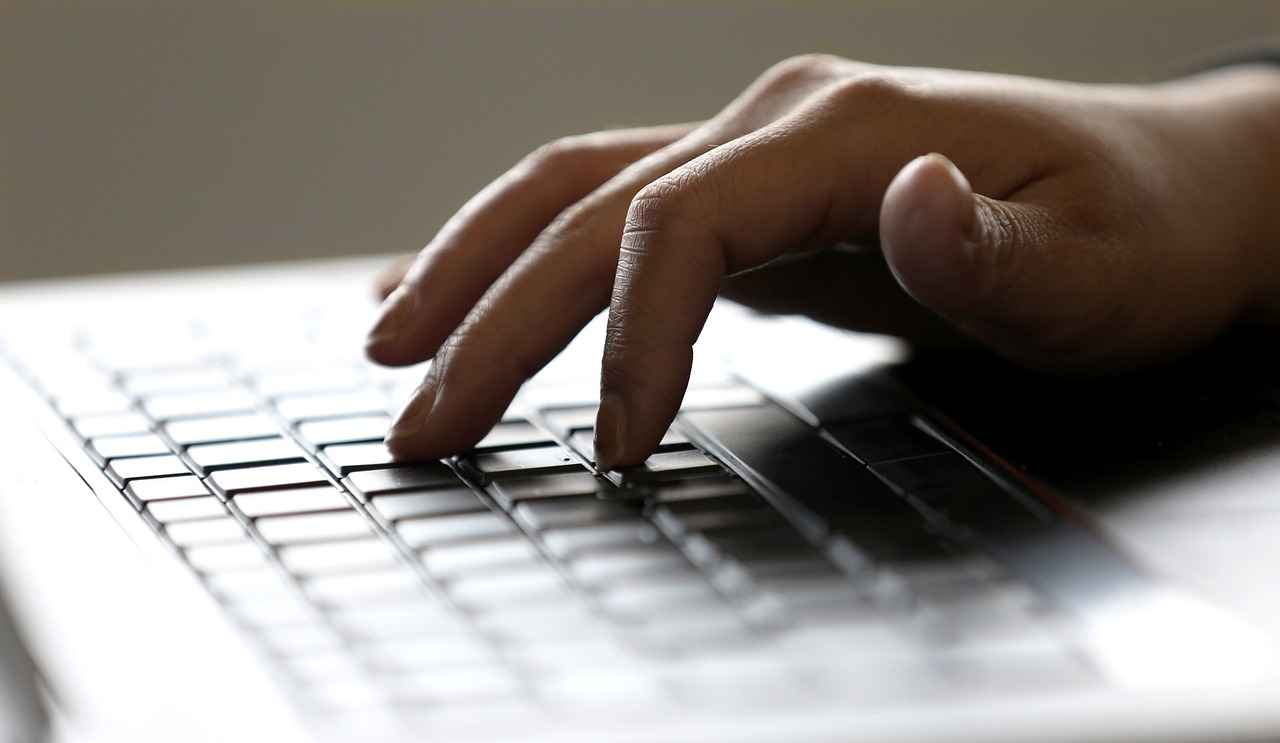This article delves into effective strategies that can significantly enhance your productivity while working part-time from the comfort of your home. Discover a range of practical tips, tools, and techniques designed to help you maintain focus and achieve your work goals efficiently.
Understanding Remote Work Dynamics
Remote work presents a unique blend of challenges and opportunities. Understanding these dynamics is crucial for cultivating an environment that fosters productivity and work-life balance. It’s essential to recognize how your home environment can impact your work performance.
Setting Up Your Ideal Workspace
Creating a dedicated workspace is essential for maximizing productivity. Here are some tips:
- Choosing the Right Location: The location of your workspace significantly impacts your output. Opt for a spot that balances comfort and accessibility, while minimizing interruptions.
- Lighting and Ergonomics: Proper lighting and ergonomic furniture can prevent fatigue. Ensure your workspace is well-lit and your seating supports good posture.
- Personalizing Your Space: Adding personal touches can boost motivation. Create an inspiring environment that reflects your personality.
Establishing a Routine
A consistent daily routine can enhance focus and productivity. Structure your day effectively, allocating specific time slots for work and breaks.
Utilizing Productivity Tools
Incorporating productivity tools can streamline your workflow. Some essential apps include:
- Task Management Apps: Use apps like Trello or Asana to track projects and deadlines.
- Time Management Techniques: Methods like the Pomodoro Technique can maximize your efficiency.
Maintaining Work-Life Balance
Striking a balance between work and personal life is crucial. Here are some strategies:
- Setting Boundaries: Communicate your work hours to family and colleagues to minimize interruptions.
- Taking Breaks Effectively: Schedule regular breaks to recharge your energy without disrupting your workflow.
Conclusion: Embracing Remote Work Productivity
By implementing these strategies, you can significantly enhance your productivity while working part-time remotely. Embrace the flexibility that remote work offers, and create a balanced, fulfilling work experience.

Understanding Remote Work Dynamics
In today’s fast-paced world, remote work has become increasingly prevalent, offering both unique challenges and exciting opportunities. As organizations adapt to this new way of working, it is essential to understand the dynamics that drive productivity and work-life balance in a remote setting.
One of the primary challenges of remote work is the potential for isolation. Without the physical presence of colleagues, workers may feel disconnected, which can impact motivation and collaboration. To combat this, it’s vital to foster a sense of community through regular communication and virtual team-building activities. Utilizing tools like video conferencing and instant messaging can help maintain relationships and ensure everyone feels included.
Another critical aspect is time management. The flexibility of remote work can blur the lines between personal and professional life, leading to longer hours and potential burnout. Establishing a structured daily routine is crucial. Setting specific work hours, taking regular breaks, and defining a clear end to the workday can significantly enhance productivity and prevent fatigue.
Moreover, the home environment presents its own set of distractions, from household chores to family interruptions. Creating a dedicated workspace, free from distractions, is essential for maintaining focus. This space should be equipped with ergonomic furniture and proper lighting to enhance comfort and efficiency.
On the flip side, remote work offers unparalleled flexibility, allowing individuals to tailor their schedules to their peak productivity times. This adaptability can lead to improved job satisfaction and a better work-life balance when managed effectively.
In conclusion, understanding the dynamics of remote work is vital for cultivating an environment that promotes both productivity and a healthy work-life balance. By addressing challenges and leveraging opportunities, individuals and organizations can thrive in this evolving landscape.

Setting Up Your Ideal Workspace
Creating a dedicated workspace is essential for maximizing productivity, especially when working remotely. A well-designed environment not only minimizes distractions but also enhances focus, allowing you to perform at your best. Here are some tips to help you design an effective workspace.
- Choose the Right Location: The location of your workspace can greatly influence your productivity. Select a spot that is quiet and free from interruptions. Ideally, this should be a separate room or a designated corner in your home that signals to your brain that it’s time to work.
- Optimize Lighting: Natural light can improve your mood and energy levels. Position your desk near a window if possible. If not, invest in quality lighting that reduces eye strain and creates a pleasant atmosphere.
- Invest in Ergonomic Furniture: Comfort is key to maintaining focus. Use an ergonomic chair and desk that support your posture. This will help prevent fatigue and discomfort during long working hours.
- Minimize Clutter: A clean workspace can enhance concentration. Keep only the essentials on your desk and organize your materials to avoid distractions.
- Add Personal Touches: Incorporating personal items like photos or plants can make your workspace more inviting and boost your motivation.
In summary, a well-thought-out workspace is a cornerstone of productivity. By considering factors such as location, lighting, furniture, and organization, you can create an environment that not only minimizes distractions but also enhances your focus. Start implementing these changes today to see a significant improvement in your work efficiency.
Choosing the Right Location
The location of your workspace plays a crucial role in your overall productivity. It’s essential to create an environment that not only fosters focus but also promotes comfort and minimizes distractions. Here are some key considerations to help you select the best workspace location:
- Comfort is Key: Choose a spot that feels comfortable and inviting. Whether it’s a dedicated home office, a cozy corner in your living room, or a quiet café, ensure that the space is conducive to long hours of work.
- Accessibility: Your workspace should be easily accessible. If you’re working from home, select a location that allows you to transition smoothly between personal and professional tasks. If you prefer working outside your home, consider locations that are convenient to reach and equipped with necessary amenities.
- Minimize Interruptions: Look for a space that minimizes distractions. If you have family members or pets at home, find a location where you can work without frequent interruptions. If working outside, choose quieter times to visit public spaces.
- Lighting Matters: Natural light can significantly impact your mood and productivity. Opt for a workspace with ample natural light or invest in good-quality lighting to enhance your focus.
- Ergonomics: Ensure your workspace is ergonomically designed. A comfortable chair and desk can prevent physical strain and keep you focused on your tasks.
In conclusion, selecting the right location for your workspace is essential for maintaining productivity. By balancing comfort, accessibility, and minimal interruptions, you can create an environment that enhances your ability to work effectively.
Lighting and Ergonomics
Creating a comfortable and productive workspace is essential for anyone working remotely. Two critical components that significantly influence your work experience are lighting and ergonomic furniture. Proper attention to these elements can help prevent fatigue and discomfort, allowing you to maintain focus and efficiency throughout your workday.
Optimizing Lighting
Good lighting is crucial for reducing eye strain and enhancing mood. Here are some tips for optimizing lighting in your workspace:
- Utilize natural light whenever possible. Position your desk near a window to benefit from daylight.
- Incorporate task lighting with adjustable lamps to illuminate your work area without causing glare on screens.
- Use warm light bulbs to create a cozy atmosphere that can boost your productivity.
- Consider smart lighting solutions that allow you to adjust brightness and color temperature according to your needs.
Choosing Ergonomic Furniture
Investing in ergonomic furniture is vital for your physical health. Here are some key elements to consider:
- Choose a chair that provides lumbar support and encourages good posture.
- Use a desk that is adjustable to allow for both sitting and standing positions.
- Ensure your monitor is at eye level to reduce neck strain and promote a comfortable viewing angle.
- Incorporate keyboard and mouse supports to minimize wrist strain during long hours of work.
By taking the time to optimize your lighting and invest in ergonomic furniture, you can create a workspace that not only enhances your productivity but also supports your overall well-being. Remember, a comfortable environment is key to staying focused and energized throughout your workday.
Personalizing Your Space
is a vital aspect of creating a workspace that not only enhances productivity but also reflects your unique personality. By incorporating personal touches, you can significantly boost your motivation and overall job satisfaction. Here’s how to craft an inspiring environment tailored to you.
First and foremost, consider the decor you choose. Items that resonate with you—such as artwork, photographs, or souvenirs from your travels—can create a sense of comfort and familiarity. Displaying these items on your desk or walls can serve as a daily reminder of your passions and achievements.
| Decor Ideas | Benefits |
|---|---|
| Artwork | Inspires creativity and adds color |
| Personal Photos | Creates a sense of belonging |
| Plants | Improves air quality and adds tranquility |
In addition to decor, your workspace layout is crucial. Arrange your desk to maximize efficiency—keep essential tools within reach while ensuring there’s enough space for creative brainstorming. A clutter-free environment can lead to a clearer mind, helping you focus better on your tasks.
- Organizational Tools: Use trays, folders, or digital tools to keep your workspace tidy.
- Comfort Items: A cozy blanket or a favorite mug can make your space feel more inviting.
- Inspirational Quotes: Hang quotes that motivate you to stay focused and driven.
Lastly, consider the lighting. Natural light is ideal, but if that’s not possible, invest in warm LED lights that create a pleasant atmosphere. Proper lighting can reduce eye strain and enhance your mood, making your workspace more enjoyable.
In conclusion, personalizing your workspace is not just about aesthetics; it’s about creating an environment that fosters motivation and productivity. By infusing your personality into your workspace, you’ll be more inclined to engage with your work and achieve your goals.
Establishing a Routine
In the realm of remote work, establishing a consistent daily routine is not just beneficial; it is essential for enhancing focus and productivity. A well-structured day can lead to improved time management and a sense of accomplishment, especially when juggling part-time responsibilities.
To create an effective routine, consider the following strategies:
- Set Clear Goals: Start each day by outlining your objectives. This could include specific tasks to accomplish or projects to advance. Having clear goals provides direction and helps maintain focus.
- Designate Work Hours: Establish a specific timeframe for work. This helps to create a boundary between professional and personal time, reducing the likelihood of burnout.
- Incorporate Breaks: Schedule regular breaks to recharge your mind. Techniques such as the Pomodoro Technique—working for 25 minutes followed by a 5-minute break—can significantly improve concentration.
- Prioritize Tasks: Use a task management app to prioritize your daily responsibilities. This ensures that you tackle the most critical tasks first, enhancing productivity.
- Reflect and Adjust: At the end of each week, take time to reflect on what worked and what didn’t. Adjust your routine accordingly to optimize your workflow.
By implementing these strategies, you can create a daily routine that not only enhances your productivity but also fosters a sense of balance in your life. Remember, consistency is key; the more you adhere to your routine, the more natural it will become.
In conclusion, a thoughtfully structured day can transform your remote work experience, making it more fulfilling and productive. Embrace the power of routine and watch as your focus and efficiency soar.

Utilizing Productivity Tools
In today’s fast-paced work environment, incorporating productivity tools is essential for anyone looking to streamline their workflow and enhance efficiency. Whether you’re working part-time remotely or managing multiple projects, the right tools can help you stay organized and focused. This section explores various essential apps and software that can significantly boost your productivity.
Task Management Apps
Task management apps are vital for tracking your projects and deadlines. They allow you to create to-do lists, set reminders, and prioritize tasks effectively. Popular options include:
- Trello: A visual tool that organizes tasks into boards, making it easy to see your progress at a glance.
- Asana: Ideal for team collaboration, Asana helps manage projects and deadlines with customizable workflows.
- Todoist: A simple yet powerful task manager that helps you organize tasks by priority and deadlines.
Time Management Techniques
Implementing time management techniques can maximize your efficiency. Consider methods like:
- The Pomodoro Technique: Work in focused bursts of 25 minutes followed by a 5-minute break to maintain high levels of concentration.
- Time Blocking: Allocate specific blocks of time for different tasks to ensure you remain focused on one thing at a time.
Note-Taking and Organization Tools
Effective note-taking is crucial for retaining information and organizing your thoughts. Tools like Evernote and Notion allow you to capture ideas, create checklists, and organize notes in a user-friendly manner.
Collaboration and Communication Tools
Staying connected with colleagues is vital for remote work success. Use tools like:
- Slack: A messaging platform that enhances team communication and collaboration.
- Zoom: Essential for virtual meetings, allowing you to connect face-to-face, regardless of location.
By leveraging these productivity tools, you can create a more organized and efficient workflow, allowing you to focus on what truly matters—achieving your work goals.
Task Management Apps
have become essential tools for individuals and teams aiming to enhance their productivity and efficiency. In today’s fast-paced work environment, effectively tracking projects and deadlines is crucial. These applications not only help in organizing tasks but also in prioritizing them according to urgency and importance.
With a variety of options available, it’s important to explore popular task management apps that can cater to different needs. Here are some noteworthy choices:
- Trello: This visual tool uses boards, lists, and cards to help you organize tasks in a way that suits your workflow. It’s particularly useful for teams as it allows for collaboration and transparency.
- Asana: Known for its user-friendly interface, Asana allows users to create tasks, set deadlines, and assign responsibilities. It’s a great option for managing larger projects and tracking progress.
- Todoist: Ideal for individuals, Todoist helps users manage their personal tasks with features like recurring due dates and priority levels. Its clean interface makes it easy to stay organized.
- Microsoft To Do: This app integrates seamlessly with other Microsoft applications, making it a good choice for those already within the Microsoft ecosystem. It allows for task sharing and collaboration.
When choosing a task management app, consider factors such as user interface, collaboration features, and integration capabilities. The right app will help you not only keep track of your tasks but also enhance your overall productivity.
In conclusion, leveraging the right task management app is vital for anyone looking to stay organized and meet deadlines effectively. By exploring various options and identifying what works best for your workflow, you can significantly improve your task prioritization and management skills.
Time Management Techniques
are essential for maximizing productivity, especially in a remote work environment. By effectively managing your time, you can enhance your focus, reduce stress, and achieve your work goals more efficiently. In this section, we will explore two popular methods: the Pomodoro Technique and time blocking.
- The Pomodoro Technique: This method involves breaking your work into intervals, traditionally 25 minutes long, separated by short breaks. After completing four intervals, you take a longer break of about 15-30 minutes. This technique helps maintain concentration and prevents burnout by ensuring regular rest periods.
- Time Blocking: This strategy involves scheduling specific blocks of time for different tasks throughout your day. By allocating time slots for each activity, you create a structured plan that helps you focus on one task at a time, reducing the temptation to multitask and improving overall efficiency.
Implementing these techniques can significantly enhance your work routine. Here are some practical tips to get started:
- Identify Your Tasks: Start by listing all the tasks you need to complete. Prioritize them based on deadlines and importance.
- Set Timers: For the Pomodoro Technique, use a timer app to keep track of your work intervals and breaks. For time blocking, use calendar tools to visually allocate your time.
- Review and Adjust: At the end of each week, review your progress. Adjust your techniques as needed to better fit your workflow and enhance productivity.
In conclusion, mastering time management techniques like the Pomodoro Technique and time blocking can lead to enhanced productivity and a more balanced work-life experience. By incorporating these methods into your routine, you can ensure that you remain focused and efficient while working remotely.

Maintaining Work-Life Balance
In today’s fast-paced world, especially with the rise of remote work, maintaining a healthy work-life balance has become more crucial than ever. Striking this balance is essential not only for personal well-being but also for long-term productivity and job satisfaction.
To ensure you don’t experience burnout while working remotely, consider implementing the following strategies:
- Set Clear Boundaries: Establishing distinct boundaries between your work and personal life is vital. Designate specific work hours and communicate these to your family and colleagues. This helps in minimizing distractions and reinforcing your focus during work hours.
- Utilize a Dedicated Workspace: Create a workspace that is separate from your personal areas. This physical separation can help you mentally switch between work and personal time, enhancing your productivity.
- Schedule Regular Breaks: Taking short breaks throughout your workday can significantly improve your focus and creativity. Techniques such as the Pomodoro Technique, which involves working for 25 minutes followed by a 5-minute break, can be particularly effective.
- Engage in Physical Activity: Incorporating physical exercise into your daily routine can help alleviate stress and improve your overall mood. Consider taking a walk during your lunch break or engaging in a quick workout session.
- Practice Mindfulness: Engaging in mindfulness practices such as meditation or deep-breathing exercises can help reduce stress and increase your overall sense of well-being. Even a few minutes a day can make a difference.
- Stay Connected: Maintaining relationships with friends and family is essential for emotional support. Schedule regular catch-ups, whether virtually or in person, to foster these connections.
By implementing these strategies, you can create a sustainable work-life balance that promotes both personal well-being and professional success. Remember, the goal is to find a rhythm that works for you, allowing you to thrive in both your personal and professional life.
In conclusion, maintaining a work-life balance while working remotely is achievable with intentional strategies. Prioritize your well-being, set boundaries, and stay connected to ensure a fulfilling work experience.
Setting Boundaries
Establishing clear boundaries between work and personal time is essential for maintaining productivity and mental well-being, especially in remote work settings. Without defined limits, the lines between professional responsibilities and personal life can blur, leading to stress and burnout.
To effectively communicate these boundaries to both family and colleagues, consider the following strategies:
- Define Your Work Hours: Clearly state your working hours to family members and colleagues. Use a calendar tool to block off time when you are unavailable for personal matters. This visual cue reinforces your commitment to work during those hours.
- Communicate Openly: Have a candid conversation with your family about your work requirements. Explain the importance of uninterrupted time and how it contributes to your productivity. Encourage them to respect your work schedule.
- Utilize Technology: Leverage tools like status indicators on messaging platforms to signal when you are working. Tools like Slack or Microsoft Teams allow you to set your availability, helping colleagues understand when you are focused on tasks.
- Create a Physical Barrier: If possible, designate a specific area in your home as your workspace. This physical separation can help both you and your family recognize when you are in “work mode” and need to minimize distractions.
- Set Expectations: Inform your colleagues about your availability and preferred communication methods. For instance, let them know you may not be reachable via chat during specific hours but are available for emails.
By implementing these strategies, you can foster a healthy work-life balance that benefits both your personal and professional life. Remember, effective communication is key to ensuring that everyone understands and respects your boundaries, leading to a more productive and harmonious remote work experience.
Taking Breaks Effectively
In the fast-paced world of remote work, taking regular breaks is not just a luxury; it’s a necessity. Breaks are essential for maintaining productivity and fostering creativity. Understanding how to take effective breaks can significantly recharge your energy levels without disrupting your workflow.
Why Breaks Matter
Research shows that short breaks can improve focus and overall performance. When you work for extended periods without interruption, your brain can become fatigued, leading to decreased productivity. By incorporating breaks into your routine, you allow your mind to reset, which can enhance both your creativity and problem-solving abilities.
Types of Effective Breaks
- Physical Breaks: Step away from your desk and stretch, go for a short walk, or do some light exercise. This helps to increase blood circulation and reduce muscle tension.
- Mental Breaks: Engage in activities that require minimal cognitive effort, such as listening to music or practicing mindfulness. This can help clear your mind and reduce stress.
- Social Breaks: Connect with colleagues or friends, even if it’s just a quick chat. Social interactions can boost your mood and motivation.
How to Implement Breaks into Your Routine
To effectively integrate breaks into your work schedule, consider the following strategies:
1. Use the Pomodoro Technique: Work for 25 minutes, then take a 5-minute break.2. Set reminders: Use apps or timers to remind you to take breaks.3. Schedule longer breaks: Allocate time for longer breaks during your day, such as a lunch break.
Conclusion
Incorporating effective breaks into your work routine is crucial for sustaining productivity and creativity. By understanding the importance of breaks and implementing them strategically, you can enhance your overall work experience while maintaining a healthy work-life balance.

Staying Connected with Colleagues
In today’s digital landscape, maintaining communication with your team is more crucial than ever, especially when working remotely. As the nature of work evolves, fostering collaboration and support among team members can significantly enhance productivity and morale. Here are some effective strategies to ensure your team stays connected.
- Regular Virtual Meetings: Schedule consistent check-ins with your team. These meetings can help keep everyone aligned on project goals and deadlines. Use video conferencing tools to create a more personal connection.
- Utilizing Collaboration Tools: Leverage platforms like Slack, Microsoft Teams, or Asana. These tools facilitate seamless communication and project management, allowing team members to share updates and resources in real-time.
- Encouraging Open Communication: Foster an environment where team members feel comfortable sharing ideas and feedback. This can be achieved through open-door policies in virtual spaces, ensuring everyone’s voice is heard.
- Engaging in Team-Building Activities: Organize virtual team-building exercises or casual hangouts to strengthen relationships. These activities can break the ice and promote camaraderie among team members.
- Setting Clear Expectations: Clearly define roles and responsibilities to avoid confusion. When everyone knows what is expected of them, it enhances accountability and teamwork.
By implementing these strategies, you can create a supportive remote work environment that encourages collaboration and strengthens team dynamics. Remember, effective communication is the backbone of any successful team, especially in a remote setting.
In conclusion, staying connected with colleagues while working remotely is not just about exchanging information; it’s about building relationships and fostering a collaborative spirit. By utilizing the right tools and strategies, you can ensure that your team remains engaged, motivated, and productive.
Virtual Meetings and Check-ins
In today’s fast-paced work environment, regular virtual meetings are essential for keeping your team aligned and motivated. These online gatherings not only facilitate communication but also foster a sense of community among remote workers. To ensure your virtual meetings are productive and engaging, consider the following best practices:
- Set Clear Objectives: Before each meeting, outline specific goals. This helps participants understand the purpose and stay focused.
- Choose the Right Tools: Utilize reliable video conferencing platforms like Zoom, Microsoft Teams, or Google Meet. Ensure that all team members are familiar with the chosen software to avoid technical issues.
- Encourage Participation: Foster an inclusive environment by inviting input from all participants. Use features like polls or breakout rooms to engage everyone actively.
- Keep Meetings Short: Aim for concise meetings to respect everyone’s time. A 30-minute meeting can be more effective than an hour-long session filled with unnecessary discussion.
- Follow Up: After the meeting, send a summary of key points and action items. This reinforces accountability and ensures everyone is on the same page.
Incorporating these practices can significantly enhance the effectiveness of your virtual meetings. By prioritizing clarity and collaboration, you can keep your team motivated and aligned, even in a remote setting.
Remember, the goal of virtual meetings is not just to communicate but to build relationships and foster a collaborative spirit among team members.
Using Collaboration Tools
In today’s fast-paced work environment, collaboration tools play a vital role in enhancing teamwork and project management. These platforms not only facilitate seamless communication but also foster a culture of collaboration among team members, regardless of their physical locations.
Why Collaboration Tools Matter
As remote work becomes increasingly common, the need for effective collaboration tools has never been more critical. They help bridge the gap between team members, ensuring that everyone is on the same page. Here are some key benefits:
- Improved Communication: Instant messaging, video calls, and discussion forums allow for quick exchanges of ideas and feedback.
- Enhanced Project Management: Tools like Trello and Asana help teams track progress, assign tasks, and manage deadlines efficiently.
- Document Sharing: Platforms such as Google Drive and Dropbox enable easy sharing and collaboration on documents, making it simple to work together in real time.
Popular Collaboration Platforms
Several platforms have emerged as leaders in the collaboration space, each offering unique features to enhance teamwork:
| Platform | Key Features |
|---|---|
| Slack | Real-time messaging, file sharing, and integrations with other tools. |
| Microsoft Teams | Video conferencing, chat, and integration with Microsoft Office applications. |
| Zoom | High-quality video conferencing with screen sharing and recording options. |
| Asana | Task management, project tracking, and team collaboration features. |
Best Practices for Effective Collaboration
To maximize the benefits of collaboration tools, consider the following best practices:
- Choose the Right Tool: Select a platform that aligns with your team’s needs and workflow.
- Encourage Regular Communication: Foster a culture of open communication to keep everyone engaged.
- Set Clear Goals: Define project objectives and individual responsibilities to ensure accountability.
In conclusion, leveraging collaboration tools can significantly enhance teamwork and project management. By choosing the right platforms and implementing best practices, teams can achieve seamless communication and collaboration, ultimately driving productivity and success.

Conclusion: Embracing Remote Work Productivity
In today’s fast-paced world, the ability to work part-time remotely has become increasingly important. By implementing effective strategies, you can significantly enhance your productivity while enjoying the flexibility that remote work offers. Here are several insights to help you create a balanced and fulfilling work experience.
Understanding the Remote Work Environment
Remote work is not just about working from home; it involves adapting to a new environment that can either boost or hinder your productivity. Recognizing the unique dynamics of remote work is essential for success. This includes understanding how to manage your time effectively and how to create a workspace that minimizes distractions.
Creating Your Ideal Workspace
Establishing a dedicated workspace is crucial. It should be a place where you can focus and feel comfortable. Consider the following:
- Choosing the Right Location: Find a spot in your home that is quiet and free from interruptions.
- Lighting and Ergonomics: Ensure your workspace has adequate lighting and ergonomic furniture to prevent discomfort.
- Personalizing Your Space: Add personal touches that inspire you, such as artwork or plants.
Developing a Consistent Routine
A structured daily routine can significantly enhance your focus. Plan your day by setting specific work hours and sticking to them. This helps in maintaining a work-life balance, which is vital for long-term productivity.
Utilizing Productivity Tools
Incorporate various productivity tools to streamline your workflow. Task management apps can help you track your projects effectively, while time management techniques like the Pomodoro Technique can maximize your efficiency.
Maintaining Work-Life Balance
Establish clear boundaries between your work and personal life. Communicate these boundaries to your family and colleagues to minimize distractions. Remember to take regular breaks to recharge your energy and creativity.
Staying Connected with Colleagues
Even while working remotely, maintaining communication with your team is crucial. Regular virtual meetings and collaboration tools can foster a sense of teamwork and keep everyone aligned on goals.
By embracing these strategies, you can enhance your productivity while working part-time remotely. Take advantage of the flexibility and opportunities that remote work provides, and strive to create a balanced and fulfilling work experience.
Frequently Asked Questions
- What are the best strategies for staying productive while working part-time remotely?
To stay productive, create a dedicated workspace, establish a consistent routine, and utilize productivity tools. Make sure to set clear boundaries between work and personal time, and take regular breaks to recharge your energy.
- How can I minimize distractions in my home workspace?
Minimize distractions by choosing a quiet location, using noise-canceling headphones, and keeping your workspace organized. Personalizing your space can also help you stay motivated and focused.
- What tools can I use to manage my tasks and time effectively?
Consider using task management apps like Trello or Asana to track your projects. For time management, techniques like the Pomodoro Technique or time blocking can help you stay on track and maximize your efficiency.
- How can I maintain a work-life balance while working remotely?
To maintain balance, set clear work hours and communicate these boundaries with family and colleagues. Make sure to schedule breaks and engage in personal activities to avoid burnout.
- What are some effective ways to stay connected with my team remotely?
Regular virtual meetings and check-ins can keep your team aligned. Using collaboration tools like Slack or Microsoft Teams can enhance communication and foster teamwork.
